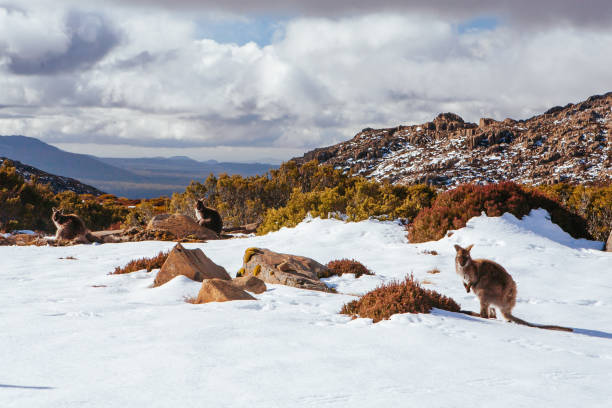Learn What Fun Experiences You Can Try When Visiting Snow In Australia
Learn What Fun Experiences You Can Try When Visiting Snow In Australia
Blog Article
Discover the Remarkable Effects of Snow in Australia on Local Ecosystems
In spite of its online reputation for sun-soaked landscapes, Australia additionally flaunts regions blanketed by snow-- a phenomenon that greatly affects the country's one-of-a-kind ecological communities. The protecting properties of snows secure vegetation and fauna amidst the coldest wintertimes, while the melting snow nurtures rivers and aquatic life. Nonetheless, the real marvel hinge on just how these wintry conditions shape the nation's biodiversity and nutrient cycles. As we decipher this intricate connection, we discover ourselves walking on untouched premises in Australia's high nation.
The Unforeseen Regions of Snowfall in Australia
Although Australia is typically related to sun-scorched landscapes and sandy coastlines, particular regions remarkably experience snowfall. The high country areas of New South Wales, Victoria, and Tasmania are especially recognized for their winter snow. The Snowy Mountains in NSW, for circumstances, obtain abundant seasonal snow, supplying a plain contrast to the country's regular hot, arid environment. On the other hand, the Victorian Alps and components of Tasmania also see yearly snowfalls, changing the landscape right into a winter months wonderland. These locations are not just abnormalities yet indispensable parts of Australia's diverse climate system. The visibility of snow in these areas significantly influences regional ecological communities, consequently affecting the country's unique biodiversity. The specific impact on Australia's distinct vegetation will be discussed in the following area.
Exactly How Snow Impacts Australia's Unique Plants
These plants have actually advanced to endure in extreme conditions, with snow offering as a safety covering from rough winds and freezing temperature levels. The snow additionally contributes to the moisture content of the dirt, giving necessary hydration for plant life during the completely dry summertime months. In essence, the snow affects the timing of flowering and seed dispersal, the growth prices, and the survival of several plant types, showcasing the intricate interaction in between climate and plants in Australia.

The Adjustments of Australian Fauna to Snowfall
Just as Australia's vegetation has actually adjusted to the wintery conditions, the neighborhood fauna too, show impressive adaptations to the snowfall. Types like the Hill Pygmy-possum, the only Australian marsupial understood to hibernate, have progressed strategies to make it through in snowy atmospheres. It utilizes the snow as insulation, hibernating in rock crevices below the snow to remain cozy. The Snow Skink, a varieties of reptile, transforms its colour to white throughout winter, giving camouflage versus predators. Birds learn this here now such as the Snowy Mountains' Crimson Rosella also readjust their diet plans to take in offered sites food sources during colder durations. Hence, in spite of the extreme problems, Australian animals shows a flexible and resistant nature, guaranteeing their survival in areas experiencing snowfall.
The Function of Snow in Forming Neighborhood Environments
In forming the local ecosystems, the duty of snow in Australia is both extensive and multilayered. Snow offers an essential water resource, feeding rivers and storage tanks as it melts, hence supporting a range of marine life forms. The existence of snow shapes the plant life patterns, pet habits, and general sustainability of Australia's unique communities.
The Future of Snowfall in Australia: Implications and forecasts

Offered the crucial role snow plays fit regional ecosystems, the future of snowfall in Australia is drawing enhancing focus from scientists and environmentalists. Existing climate versions predict a substantial decrease in snowfall because of international warming, with possibly profound effect on local ecological communities. Less snow could lead to lowered water accessibility in towering areas, detrimentally affecting wild animals habitats and plant. In addition, it could modify the timing of seasonal adjustments, interfering with the life cycles of numerous indigenous types. The tourist market, greatly dependent on the winter snow read the article season, might additionally encounter substantial obstacles. Understanding these forecasts and their implications is vital to establish efficient preservation approaches, making certain the conservation of Australia's one-of-a-kind biodiversity and the sustainability of its economic situation.
Final Thought
The role of snow in Australia's environments is pivotal yet commonly ignored. It works as a guard, a nurturer, and a shaper of varied alpine types, contributing to the splendor of Australia's high country. As weather patterns remain to shift, comprehending the effects and possible makeovers of these snow-influenced ecosystems is vital. Hence, the snow in Australia is much more than a natural phenomenon; it's a vital gamer in the country's environmental story.
In spite of its reputation for sun-soaked landscapes, Australia also flaunts regions blanketed by snow-- a sensation that exceptionally affects the country's one-of-a-kind communities. It utilizes the snow as insulation, hibernating in rock holes beneath the snow to remain warm - Snow In Australia.In forming the regional ecosystems, the function of snow in Australia is both multilayered and profound. The presence of snow forms the plant life patterns, animal actions, and general sustainability of Australia's one-of-a-kind communities
Provided the critical function snow plays in shaping local ecological communities, the future of snowfall in Australia is drawing increasing interest from scientists and conservationists.
Report this page